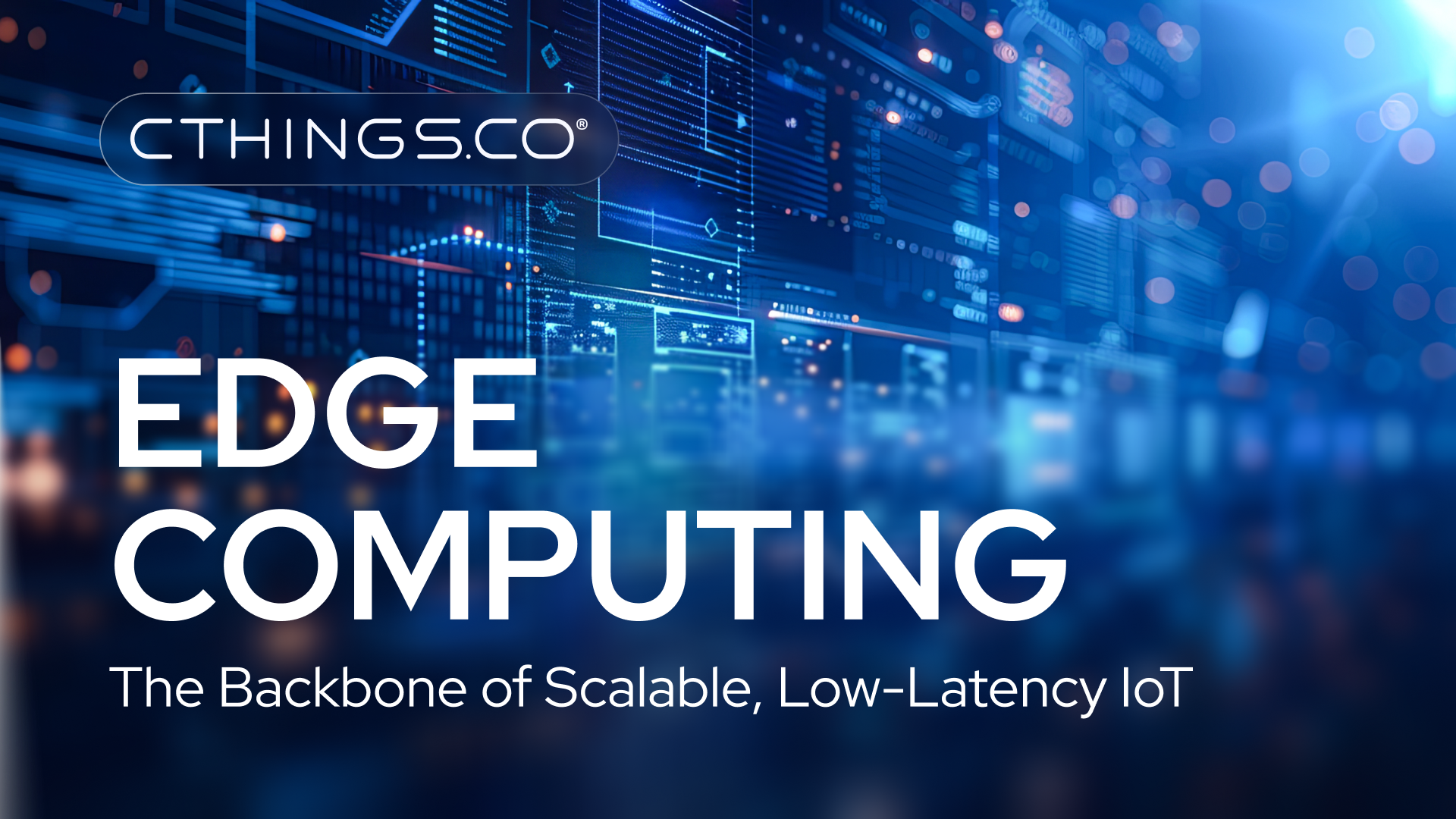Edge Computing: The Backbone of Scalable, Low-Latency IoT

As connected devices multiply and data volumes grow, the need for fast, secure, and efficient data processing is more critical than ever.
At CTHINGS.CO, we see edge computing as a foundational enabler of modern IoT, bringing real-time intelligence directly to where data is created.
But what is edge computing, how does it work, and why is it increasingly essential in industries like manufacturing, energy, and logistics?
Let’s explore.
What Is Edge Computing?
Edge computing refers to a distributed IT architecture where data processing occurs at or near the “edge” of the network—where the data is being created—rather than relying solely on centralized cloud systems.
At its core, the edge consists of:
- Edge Devices: Sensors, cameras, industrial equipment, and other assets that generate data.
- Edge Nodes or Gateways: Intermediate devices with computing power that collect, filter, and process data locally.
- Orchestration & Management Platforms: Software systems that manage data flows, deploy applications remotely, and maintain device health at scale.
The true magic of edge computing lies in its ability to process, analyze, and act on data in near real-time—often without needing to contact a distant cloud server.
How Edge Computing Works
Edge computing complements traditional cloud computing by decentralizing compute resources. Edge devices gather and analyze data at the source, sending only relevant or processed information to the cloud. This architecture reduces latency, minimizes bandwidth consumption, and supports real-time decision-making. Typical components in an edge computing system include IoT sensors, local processing units (e.g., Edge IoT Gateways), and orchestration platforms that manage connectivity, provisioning, and remote access.
Why Edge Computing Matters
The global edge computing market is projected to reach $155.9 billion by 2030. This growth is fueled by:
- Rapid expansion of IoT devices
- Demand for real-time analytics and decision-making
- Rising cloud costs and latency concerns
- Adoption of 5G networks enabling ultra-low latency applications
As these trends converge, edge computing is no longer a niche solution, it’s becoming a key requirement for data-driven industries.
Key Benefits for IoT Deployments
- Low Latency: Edge processing eliminates delays associated with sending data back and forth to the cloud, which is crucial for time-sensitive use cases like autonomous operations or predictive maintenance.
- Operational Resilience: Edge systems continue functioning even if internet connectivity is interrupted, improving reliability in critical environments.
- Efficiency and Scalability: Processing data locally reduces network congestion and cloud dependency, allowing systems to scale more effectively and economically.
- Data Privacy and Security: By keeping sensitive data on-premises or within controlled networks, organizations reduce exposure to external threats and simplify compliance.
- Cost Reduction: Only relevant or pre-processed data is transmitted to the cloud, lowering storage, bandwidth, and compute costs.
Beyond Devices: The Rise of Edge Platforms
As edge computing matures, we’re seeing a shift from isolated edge devices to platform-driven ecosystems. These modern platforms help organizations:
- Manage large fleets of devices remotely
- Securely deploy updates and applications
- Enable real-time analytics at scale
- Integrate seamlessly with cloud and enterprise systems
This orchestration layer is essential, especially for businesses operating hundreds or thousands of connected devices across geographies. By abstracting the complexity of edge infrastructure, solutions like the CTHINGS.CO Orchestra Platform simplify adoption of edge computing and maximize ROI.
Real-World Applications
Edge computing is already transforming industries by supporting real-time analytics and automation in environments where latency, bandwidth, or connectivity are challenges. For example:
- Manufacturing: Real-time quality control, equipment monitoring, and predictive maintenance
- Logistics: Asset tracking, route optimization, and condition monitoring
- Utilities: Smart metering, grid stability, and outage management
- Robotics and Automation: Localized control for robotics and industrial systems
In each case, edge technology delivers intelligence where it’s needed most—close to the action.
The Edge Advantage
For organizations building scalable, secure, and cost-effective IoT deployments, edge computing is a critical asset. It bridges the gap between connected devices and cloud infrastructure, unlocking faster insights and more resilient operations.
Whether you’re just beginning to explore IoT or scaling up an existing deployment, embracing edge computing can be a transformative step forward. It ensures your infrastructure can keep pace with the data deluge and enables your team to focus on what matters most—using data to drive smarter decisions.
At CTHINGS.CO, we’ve seen firsthand how purpose-built orchestration platforms can accelerate edge adoption across diverse use cases. While every business will approach the edge differently, one truth remains: computing closer to the source is the future of IoT.


.png?width=5760&height=3600&name=Still%20for%20Orchestra%20Manager%20-%20Device%20Details%20(2880x1800).png)

